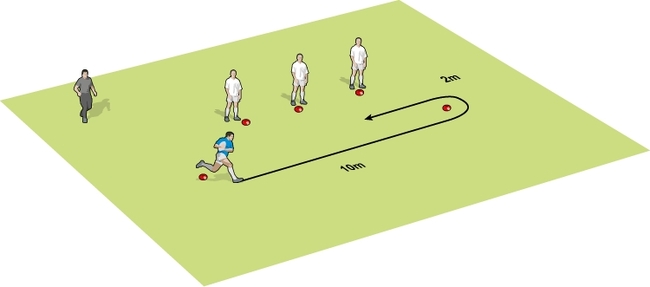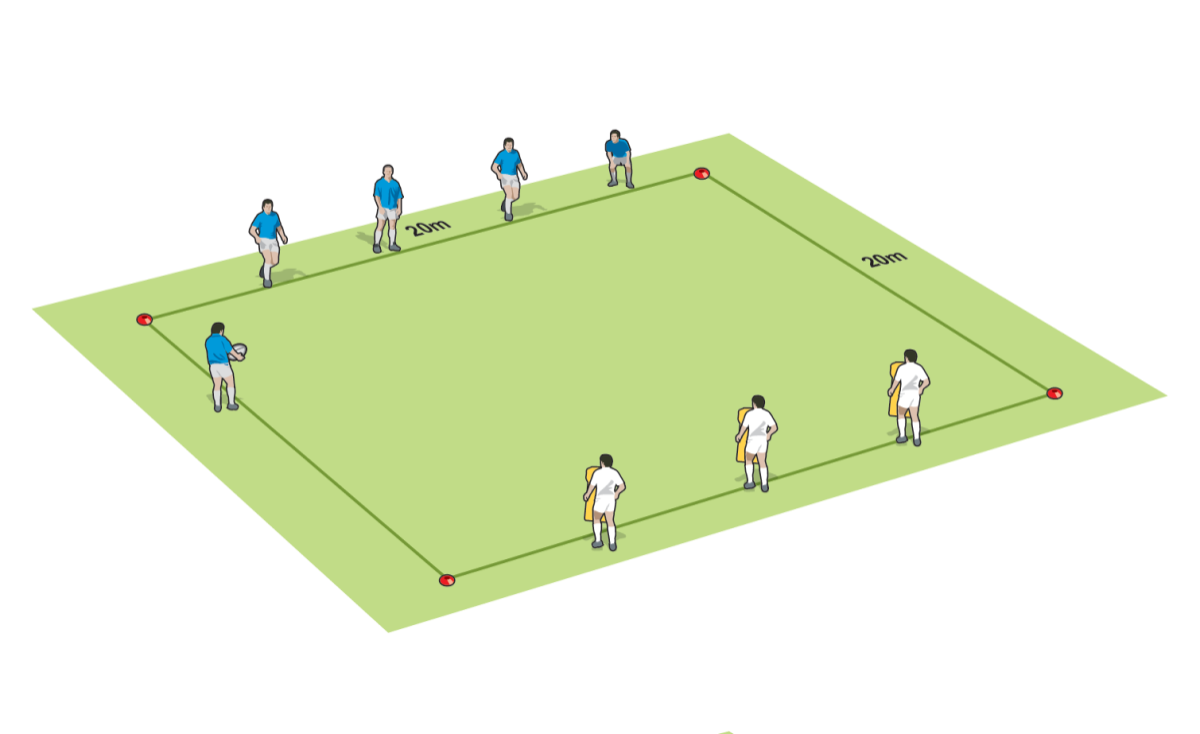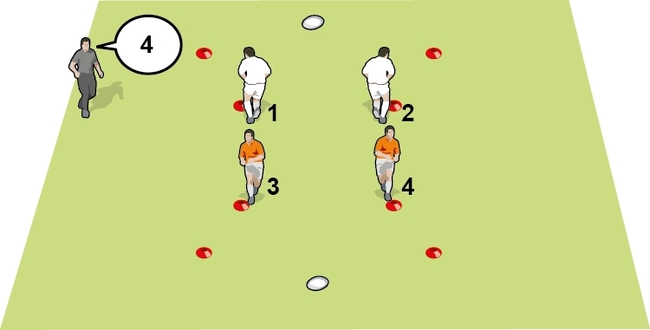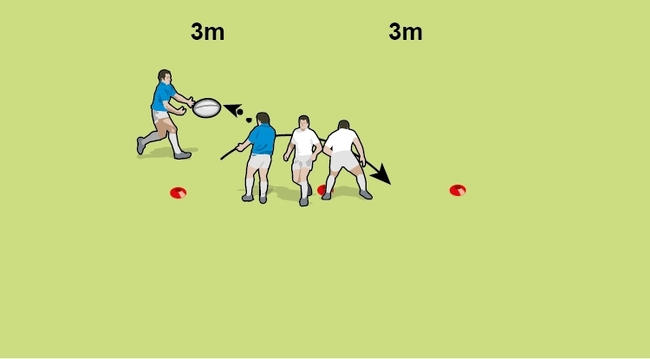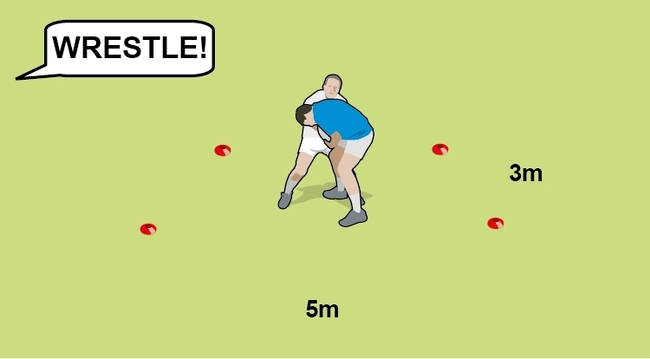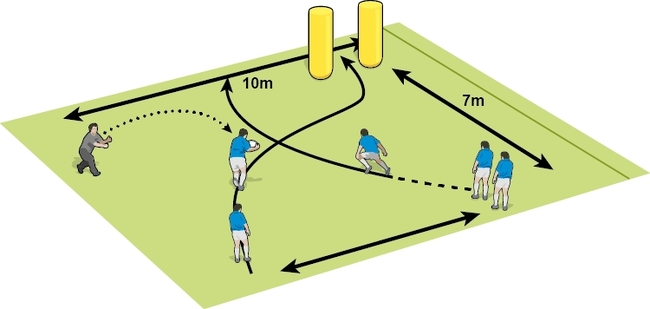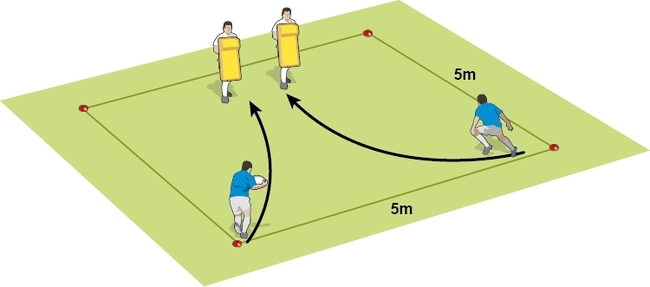Passing deception
Changing your passing action to disguise a pass will open up gaps as opposition defenders set themselves for a different length of pass.
WHY USE IT
This session works on different types of pass and the crucial running lines of attackers to make these passes work.
set up
A 20m box and three ruck pads. A 30m box for the game.
HOW TO PLAY
ACTIVITY: Put four attackers and a feeder at one end of the box and three ruck pad-holders at the other end. The ball is fed into the attackers, who have to try to beat the ruck pad-holders without the player in possession being touched by a ruck pad. Score three points for a clean break with only one pass used; two points for a two-pass clean break; and one point for a try from a break where the ball carrier was not knocked off line by a ruck pad.
GAME SITUATION: Split players into teams of five. Put two teams of five in the box, about 10m apart, and a ball at the edge of each side of the box. Shout out which ball is to be used and which team will attack. The defence has to send two players to their own try line. The attack has five seconds to set up. When you shout “Go!”, play full rugby but with no rucks, only offloads.
COACHING POINTS
- Ball carrier: Attack the defenders at pace and then aim to use a one-pass play to beat the defensive line. Disguise your passing intentions.
- Support runners: Offer different lines of attack and strong communication.
- Put four attackers at one end of the box
- Put a feeder at the side of the box
- Put three ruck pad-holders at the end of the box
Related Files
-
The attackers aim to get to the far end without the player in possession getting touched by a ruck pad
Scoring
- Three points for clean break and one pass used
- Two points for a two pass clean break
- One point for a break where the ball carrier is not knocked off line
-
Shape to pass to either close or far runners
- Challenge the line with hard angles to create space
Newsletter Sign Up
Coaches Testimonials

Gerald Kearney, Downtown Las Vegas Soccer Club

Paul Butler, Florida, USA

Rick Shields, Springboro, USA

Tony Green, Pierrefonds Titans, Quebec, Canada
Subscribe Today
Be a more effective, more successful rugby coach
In a recent survey 89% of subscribers said Rugby Coach Weekly makes them more confident, 91% said Rugby Coach Weekly makes them a more effective coach and 93% said Rugby Coach Weekly makes them more inspired.
Get Weekly Inspiration
All the latest techniques and approaches
Rugby Coach Weekly offers proven and easy to use rugby drills, coaching sessions, practice plans, small-sided games, warm-ups, training tips and advice.
We've been at the cutting edge of rugby coaching since we launched in 2005, creating resources for the grassroots youth coach, following best practice from around the world and insights from the professional game.

